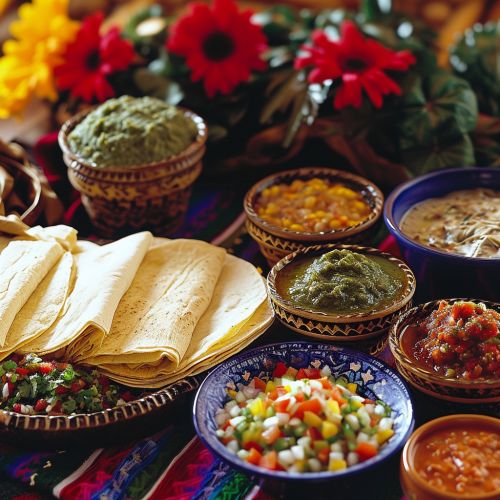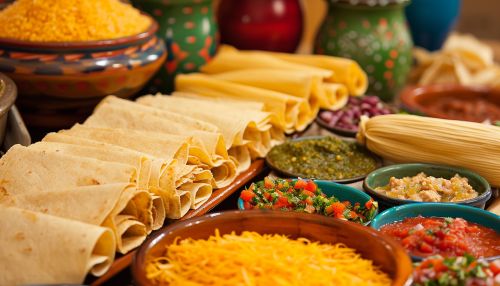Latin American Cuisine
Overview
Latin American cuisine refers to the typical foods, beverages, and cooking styles common to many of the countries and cultures in Latin America. Latin America is a highly diverse area of land whose nations have varying cuisines. Some items typical of Latin American cuisine include maize-based dishes (tortillas, tamales, pupusas) and various salsas and other condiments (guacamole, pico de gallo, mole). These spices are generally what give the Latin American cuisines a distinct flavor in peninsular Spanish; thus, these dishes are distinct from the general European dishes.


Regional Variations
Latin American cuisine varies widely by country, and even within regions of the same country. For example, the cuisines of Mexico and Argentina are quite distinct, reflecting the diverse indigenous and immigrant populations of these countries.
Mexican Cuisine
Mexican cuisine is a complex and ancient cuisine, with techniques and skills developed over thousands of years of history. It is created mostly with ingredients native to Mexico, as well as those brought over by the Spanish conquistadors, with some new influences since then. Mexican cuisine has been influenced by its proximity to the US-Mexican border. For example, burritos and fajitas are found in the United States, but not commonly in Mexico.
Argentinian Cuisine
Argentinian cuisine is characterized by its heavy use of beef, with roast meats (asado) being a particular favorite. Other popular dishes include empanadas, locro (a corn stew), and pizza, reflecting the country's Italian immigrant population.
Influence of Indigenous Cultures
The indigenous cultures of Latin America have significantly influenced Latin American cuisine. For example, maize, beans, and potatoes were staple foods in many indigenous cultures and remain central to many Latin American dishes today. In addition, indigenous cooking techniques, such as the use of the underground oven or pachamanca in Peruvian and Bolivian cuisine, continue to be used.
Influence of European and Other Immigrant Populations
The cuisines of Latin America have also been significantly influenced by European and other immigrant populations. Spanish colonists introduced new cooking methods and foods to Latin America, including olive oil, wine, and many types of fruits and vegetables. Later, Italian, German, and Eastern European immigrants brought their own culinary traditions, which were incorporated into the local cuisines.
Common Ingredients and Techniques
Common ingredients in Latin American cuisine include maize, beans, and potatoes, which are often combined with meats and spices to create a variety of dishes. Cooking techniques vary widely throughout the region, but grilling (asado) and slow-cooking (guiso) are particularly common.
Modern Trends and Fusion Cuisine
In recent years, there has been a growing interest in Latin American cuisine, both within the region and internationally. This has led to the development of fusion cuisines, which combine traditional Latin American ingredients and techniques with those from other cuisines. For example, Tex-Mex cuisine combines elements of Mexican cuisine with those of Southwestern American cuisine.
